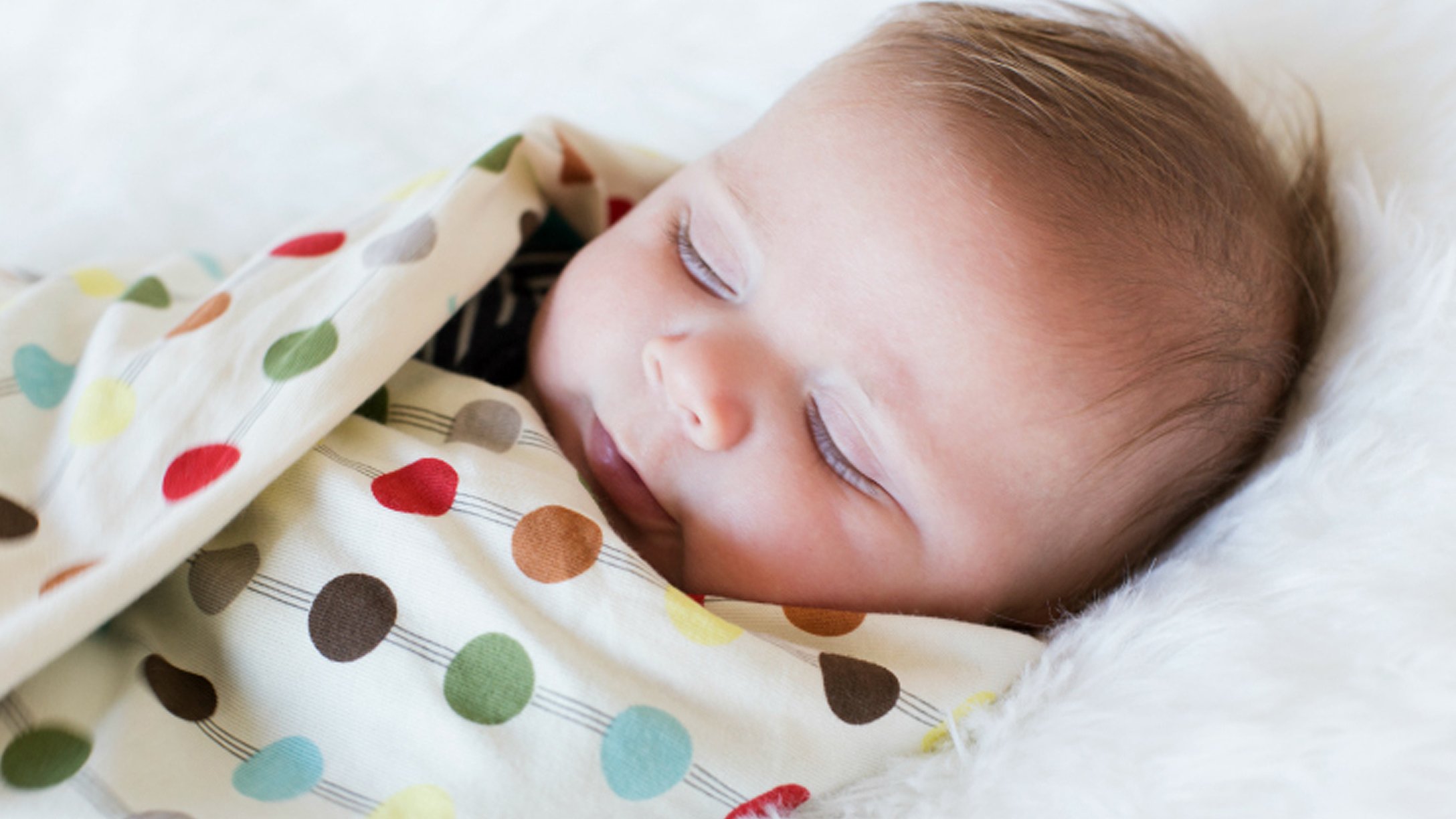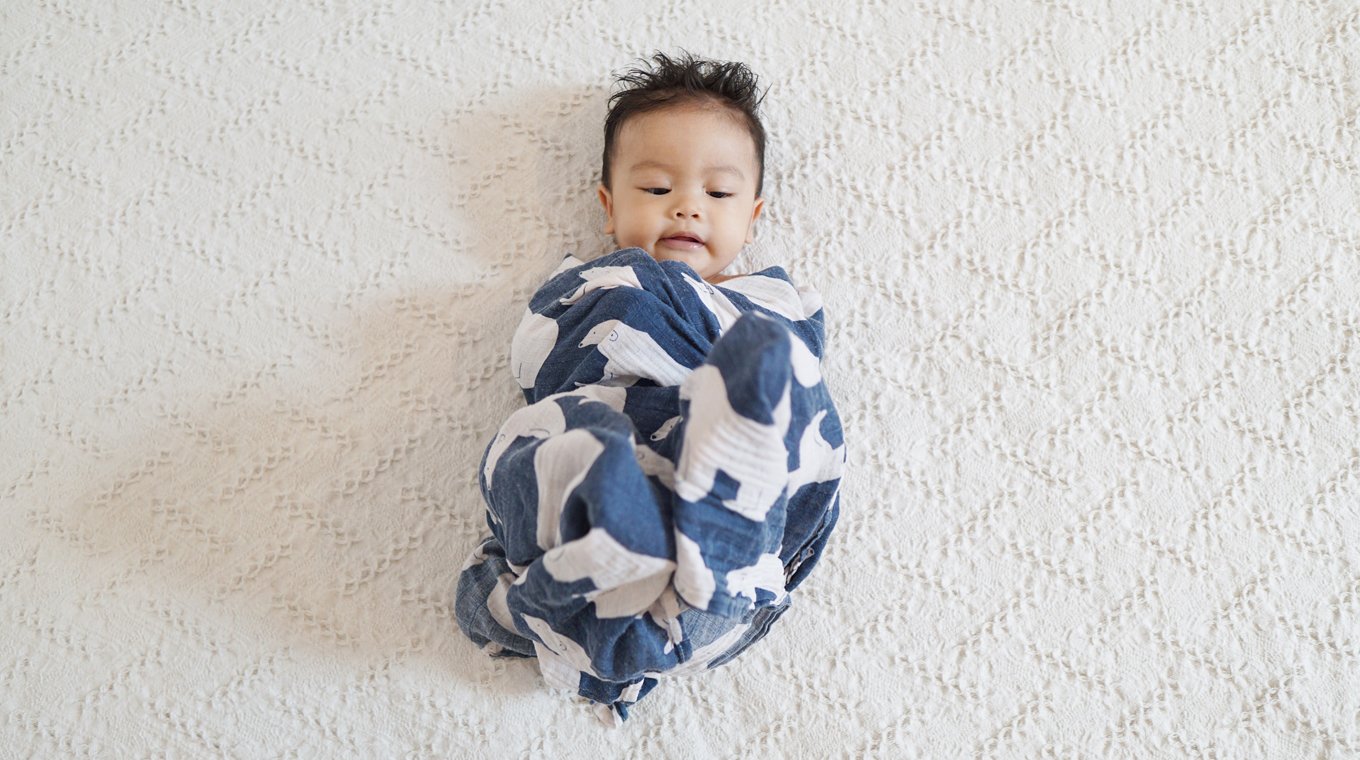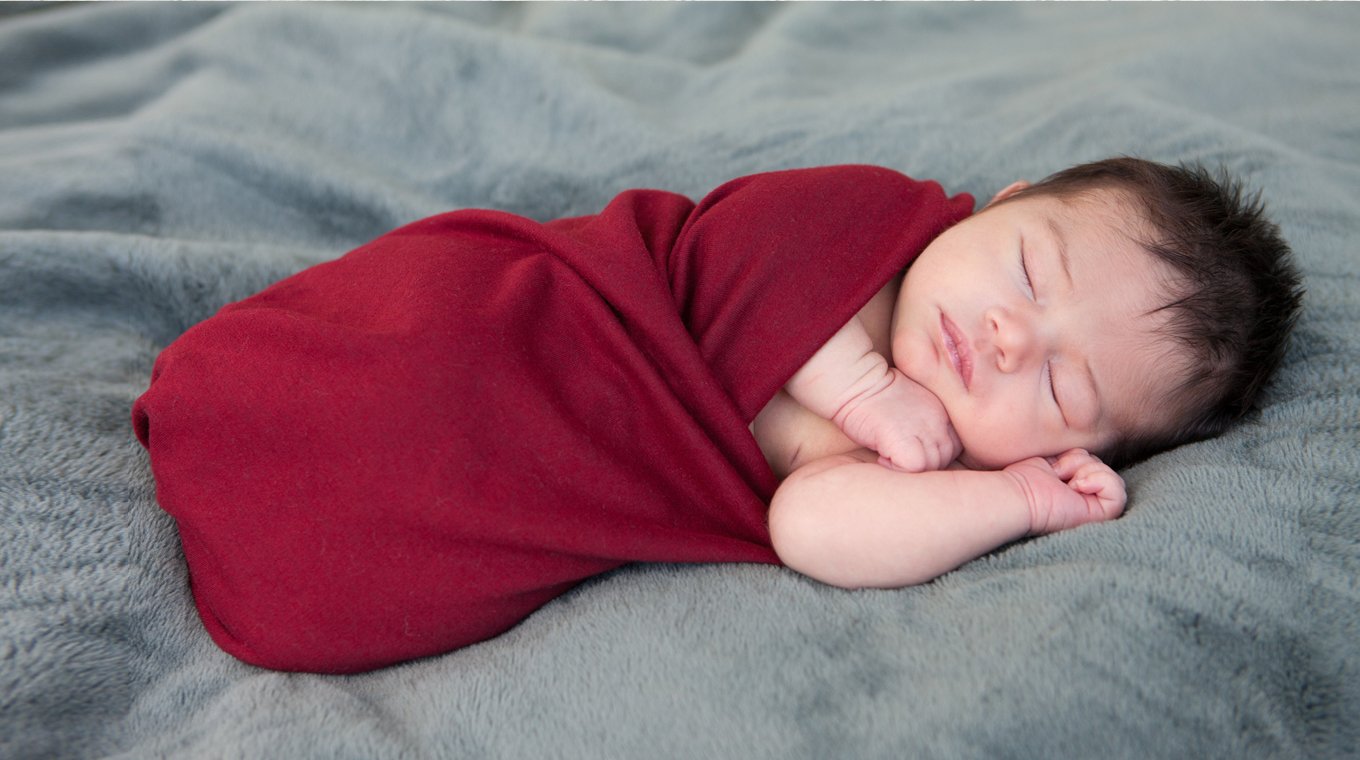
In this article
It figures, the minute you’ve mastered the perfect baby swaddle, you find yourself wondering when to stop swaddling. For around three months now, your little one had been sleeping soundly, tucked snugly into their favorite flannel receiving blanket. They’ve been reaping all the swaddling benefits — most notably, protection from their natural startle reflex and the sensation of being carried — but now you’re not sure whether it’s time to move on from this state or not. Is it safe to continue swaddling your baby?
A 2016 study in Pediatrics concluded that there is both risk and benefit when it comes to swaddling. Swaddling can soothe a baby to sleep, but there are instances of an increase in sudden infant death syndrome (SIDS) in babies that are swaddled beyond a certain age. The bottom line is that if your baby is strong enough to get out of a swaddle or has begun to try to roll over, it is time to transition out of the swaddling stage. Read on to learn when to stop swaddling your baby and how to go about it.
You've finally learned how to swaddle, but is your baby over it?

Is your baby giving you signs to stop swaddling? They may have the final say here, especially if they’re detangling themselves from the blankets or have started rolling over. It may have taken you two months to perfect the ideal swaddle and your little one looks snug as a bug in a rug, but if baby starts showing signs of rolling over, it’s time to stop swaddling. Of course, this will vary — many babies start working toward rolling over in later months.
Discontinuing swaddling will depend entirely on your infant’s development. If your baby is able to wiggle out of a swaddle or kick it off, it poses a potential suffocation hazard. Remember, the American Academy of Pediatrics (AAP) strongly discourages the use of pillows and blankets before baby’s first birthday.
How to transition from swaddling

If your baby is exhibiting signs that they’re learning to roll over, you can make the transition easier for everyone by transitioning from swaddling over a period of a week or so. Consider swaddling with one arm loose for two or three nights to determine how baby takes to this change.
If your baby’s Moro reflex — the startle reflex that makes them move their arms and legs in response to stimuli — has subsided, they may take well to this transition. Leave the other arm out of the swaddle for an additional two nights. If your baby is not doing well being out of the swaddle, continue to swaddle them and try the process again in another two weeks.
Also, note that timing may be everything when it comes to swaddling and transitioning away from swaddling. Deborah Cruz realized that when she would try to swaddle her overtired babies too late, they weren’t receptive to the idea.
“Take cues from your baby,” Cruz previously wrote for Mom.com about swaddling challenges. “I knew my girls would go down for a nap around 9 a.m. and then again around 2 p.m., so I would start the decompressing and swaddling about a half hour before they were full-tilt exhausted. This helped them relax and fall asleep peacefully rather than fighting sleep and making us both cry.”
The same could be said for transitioning out of swaddling. Some trial and error may be necessary if your baby isn’t sleeping well while being swaddled. Ensure that all conditions are the same — they’re not overtired, hungry, or upset — before working through the transition steps. Any number of variables could affect the ease of transition.
Helpful products for the post-swaddling stage

In lieu of receiving blankets for swaddling, some hospitals, like the Baptist Health Women’s Center in Arkansas, have begun incorporating sleep sacks as part of their new-mom care packages. Upon discharge from labor and delivery, the hospitals are sending parents home with a HALO SleepSack
“We started to pass these out in all of our five delivering hospitals,” registered nurse Nikki Knowles explained on Baptist Health’s YouTube channel. “We’re teaching safe sleep here in the hospital with nothing extra in the crib, none of those traditional swaddle blankets. So we want them to use the sleep sack and swaddle with this here and we want them to do this at home as well.”
For caregivers who have been swaddling, other products like the Nested Bean wearable blanket are made specifically for the transition from swaddling. The company also offers a lightly weighted version called the Zen Sack. It is designed to mimic an adult’s soothing touch to calm your little one to sleep. When baby begins to roll, the Zen Sack can be adjusted so the embedded weight is at baby’s back. Finally, the Zen Bodysuit — made for active sleepers — allows your infant to kick, wiggle, and roll to their heart’s content.
Once your baby has transitioned out of swaddling, pajamas are the way to go, whether it’s onesies in warmer weather, footed sleepers, or two-piece pajama sets. It’s perfectly fine to put your baby in comfy pajamas; just remember, no blankets or pillows until 12 months of age.





